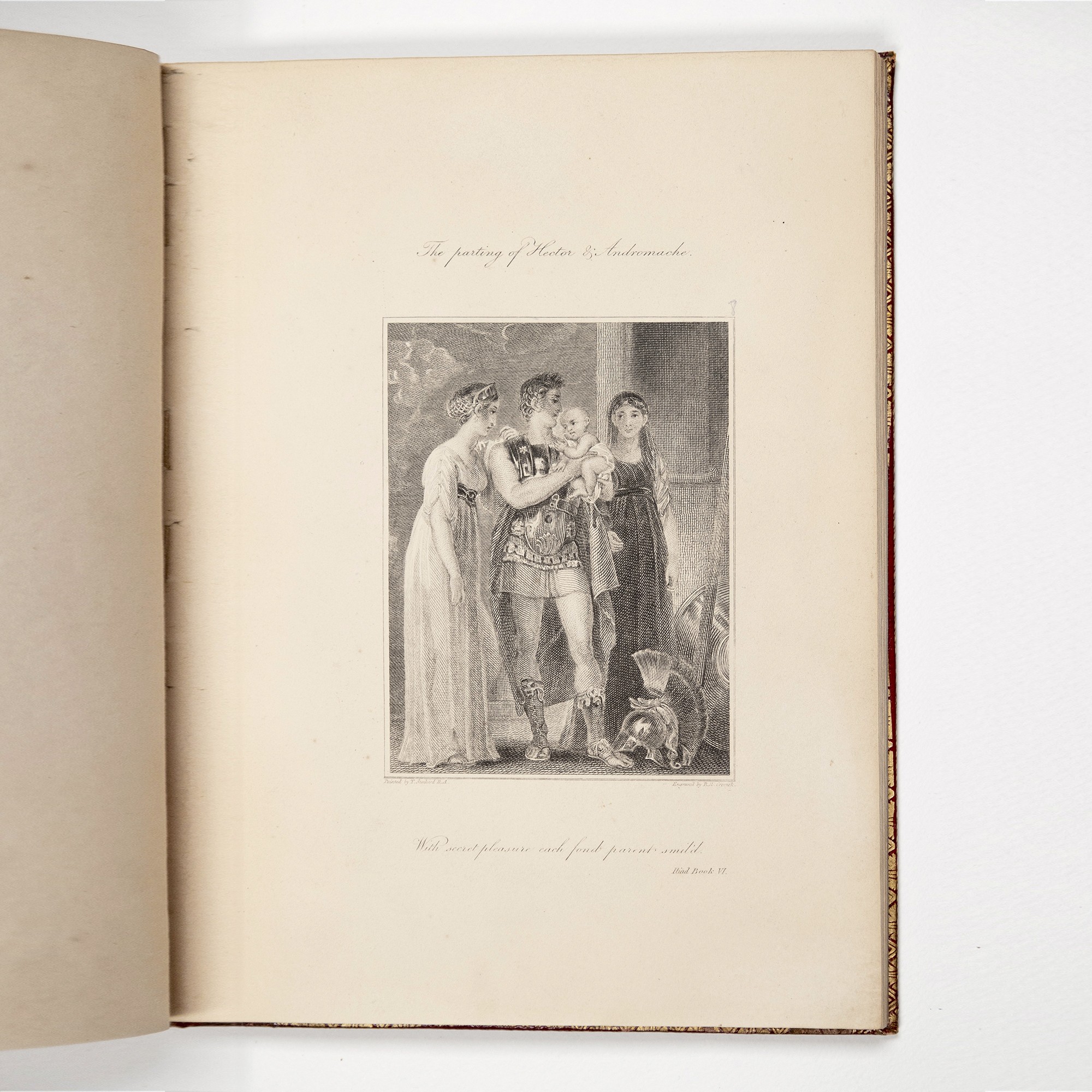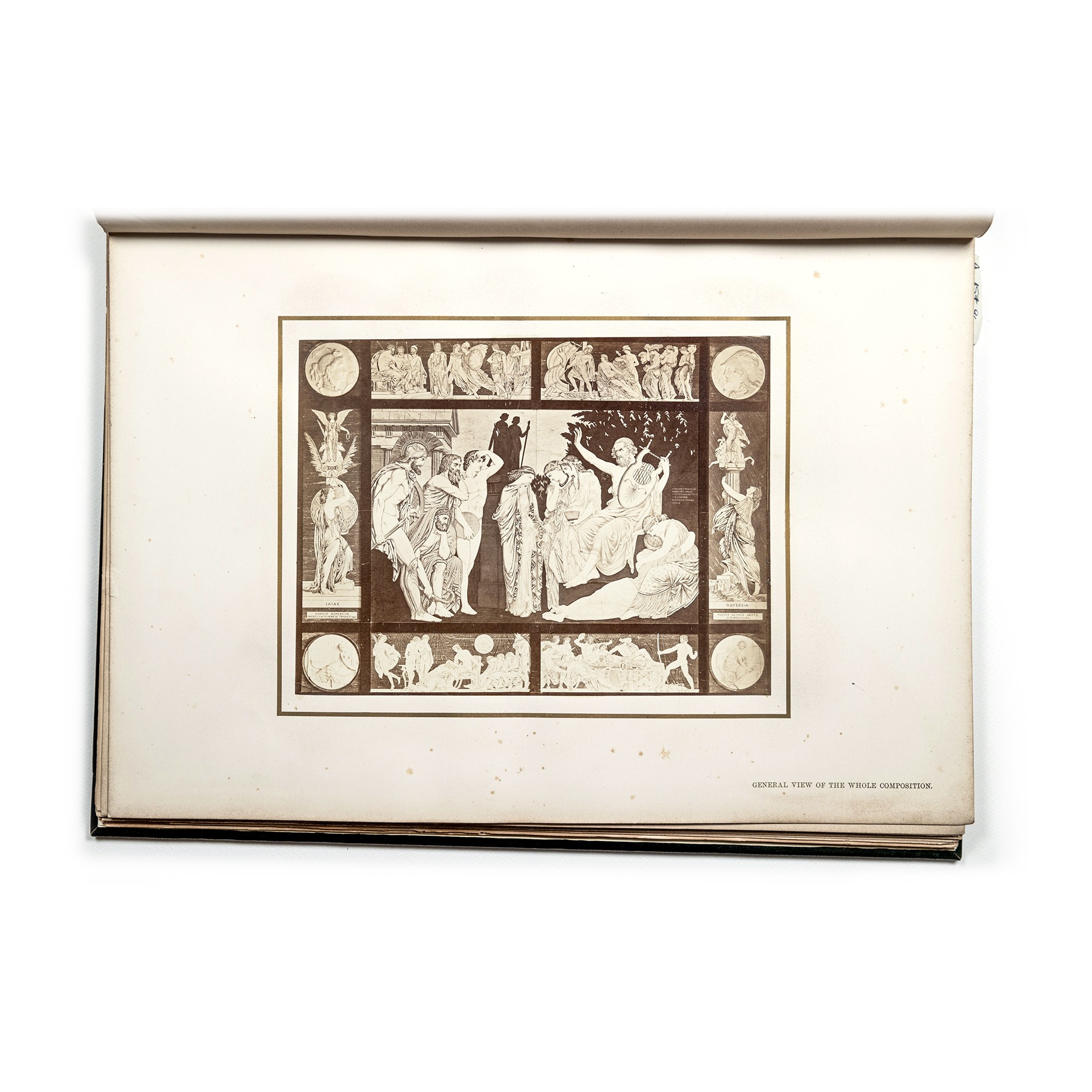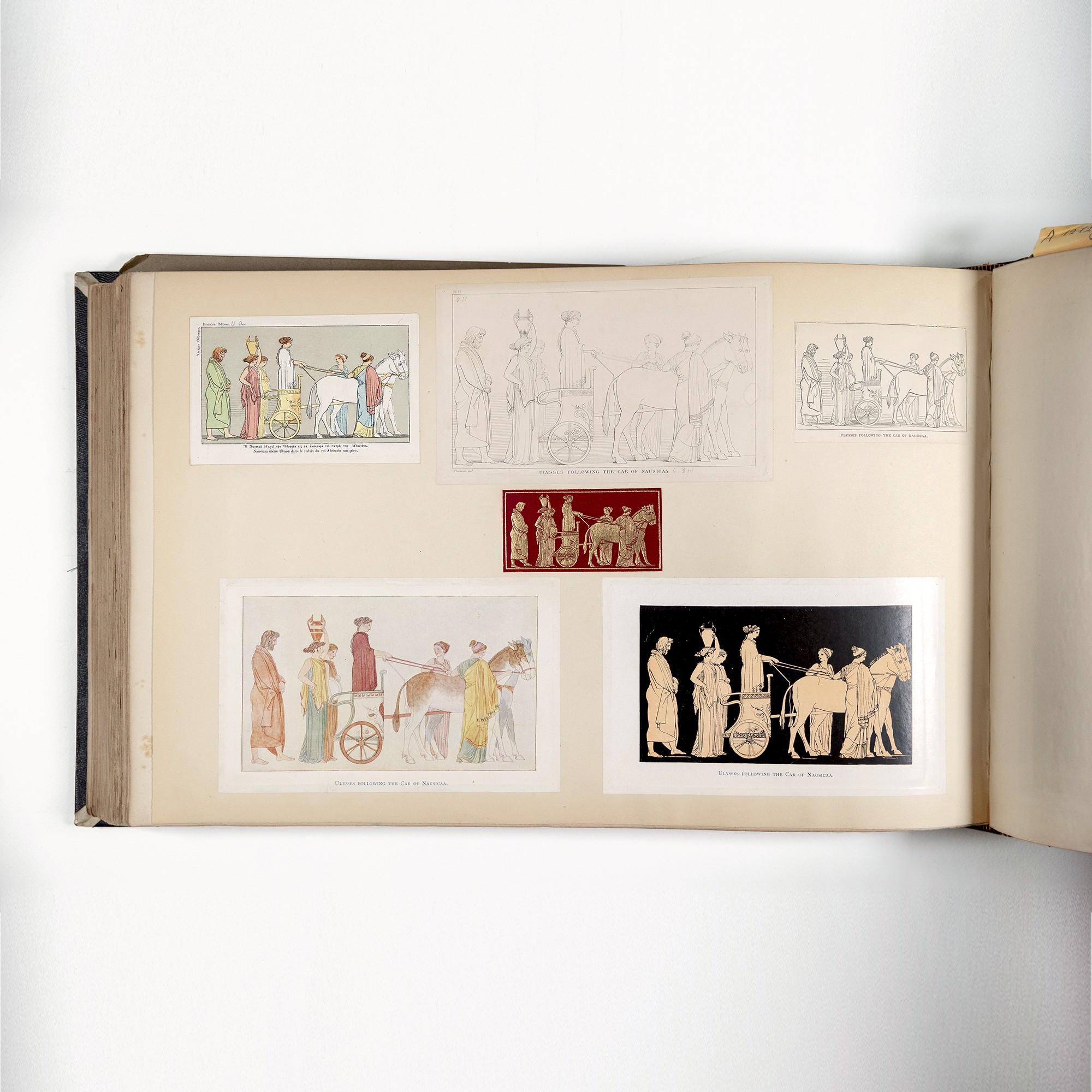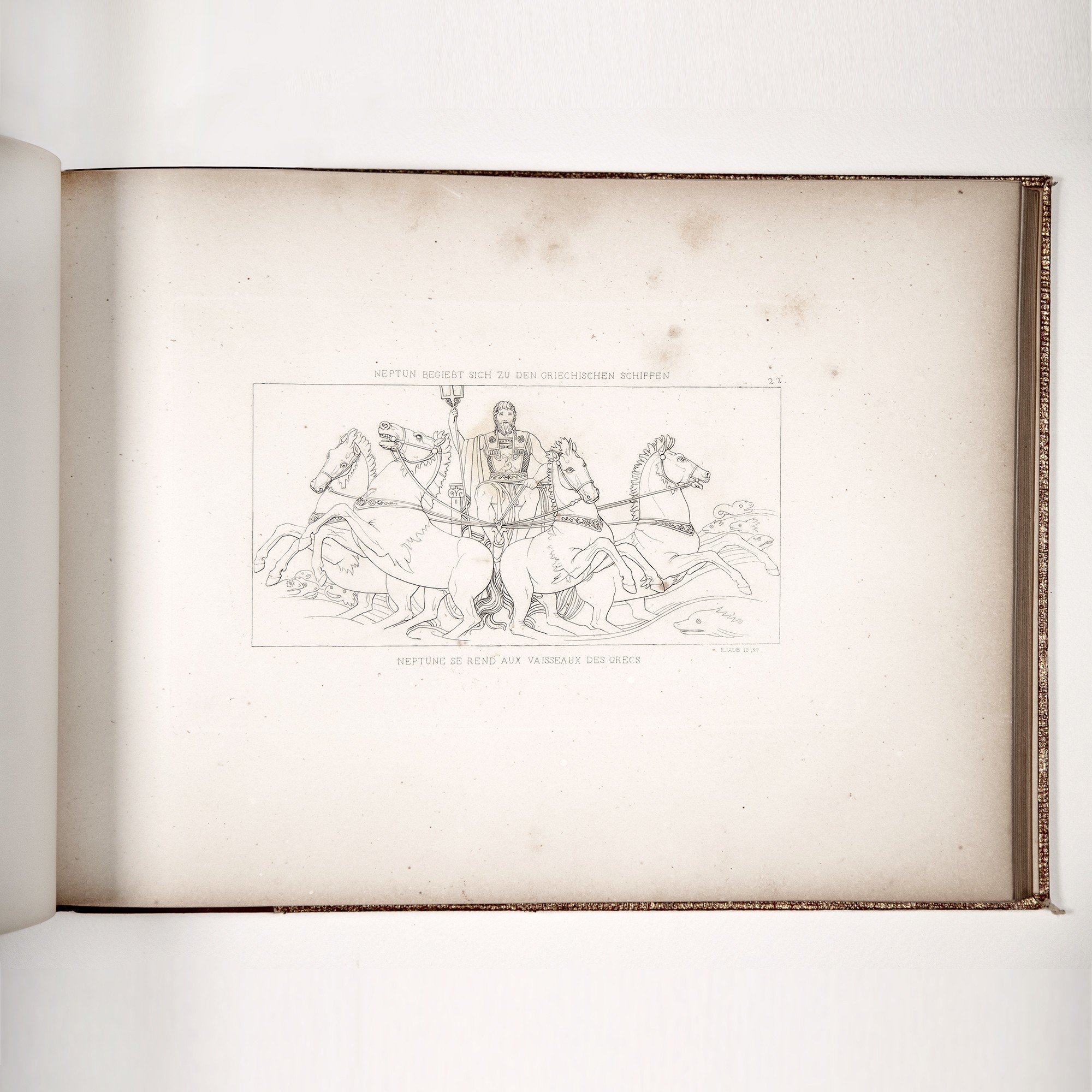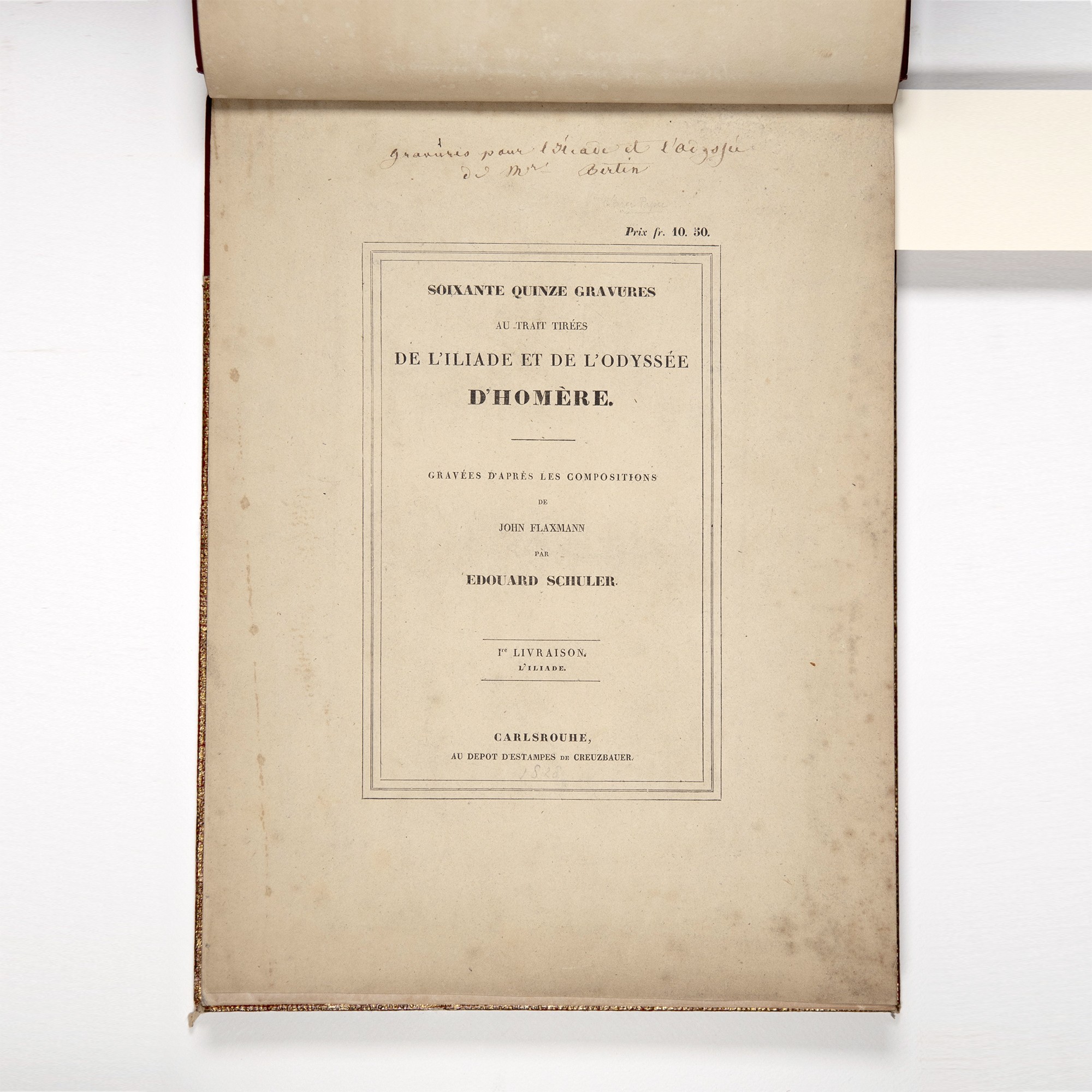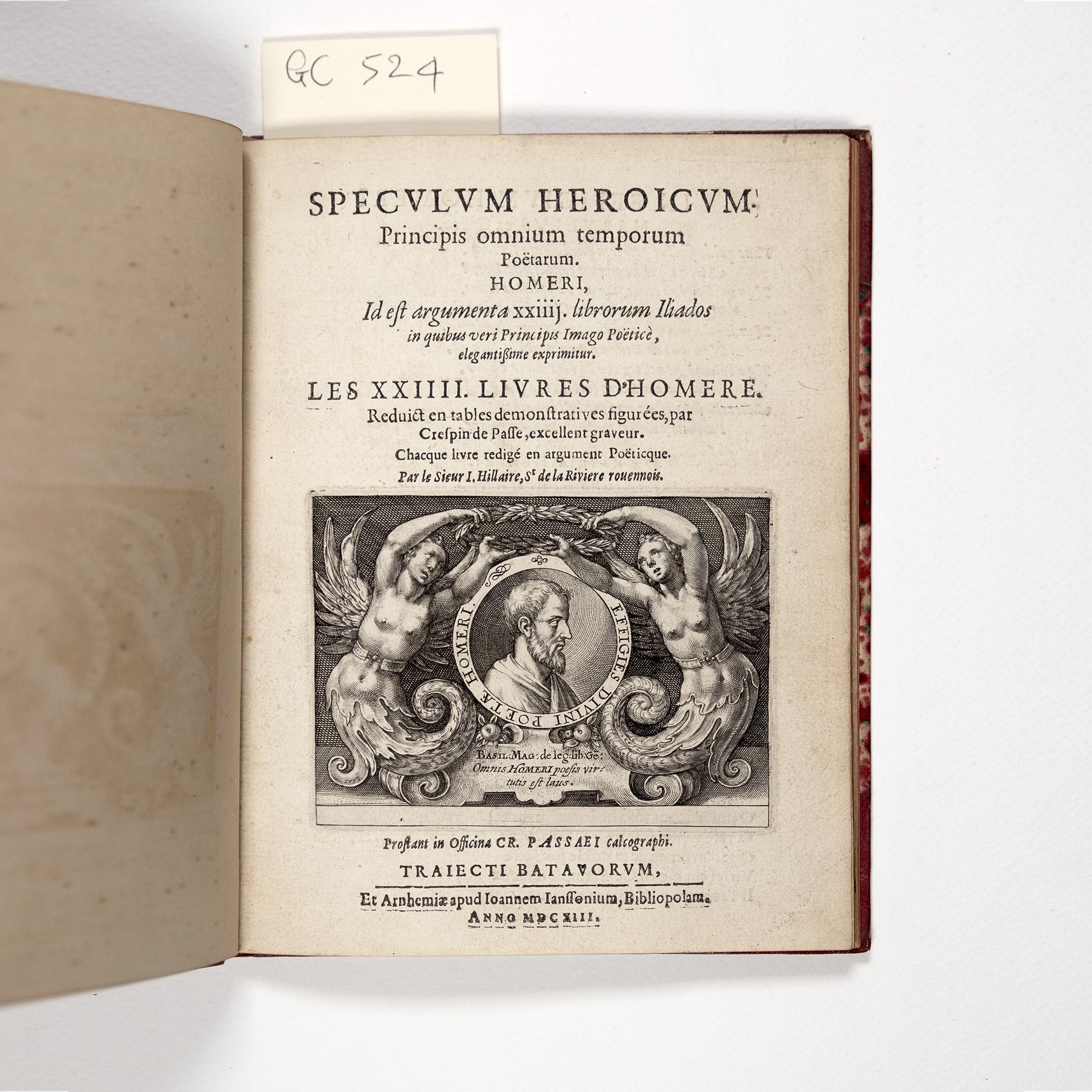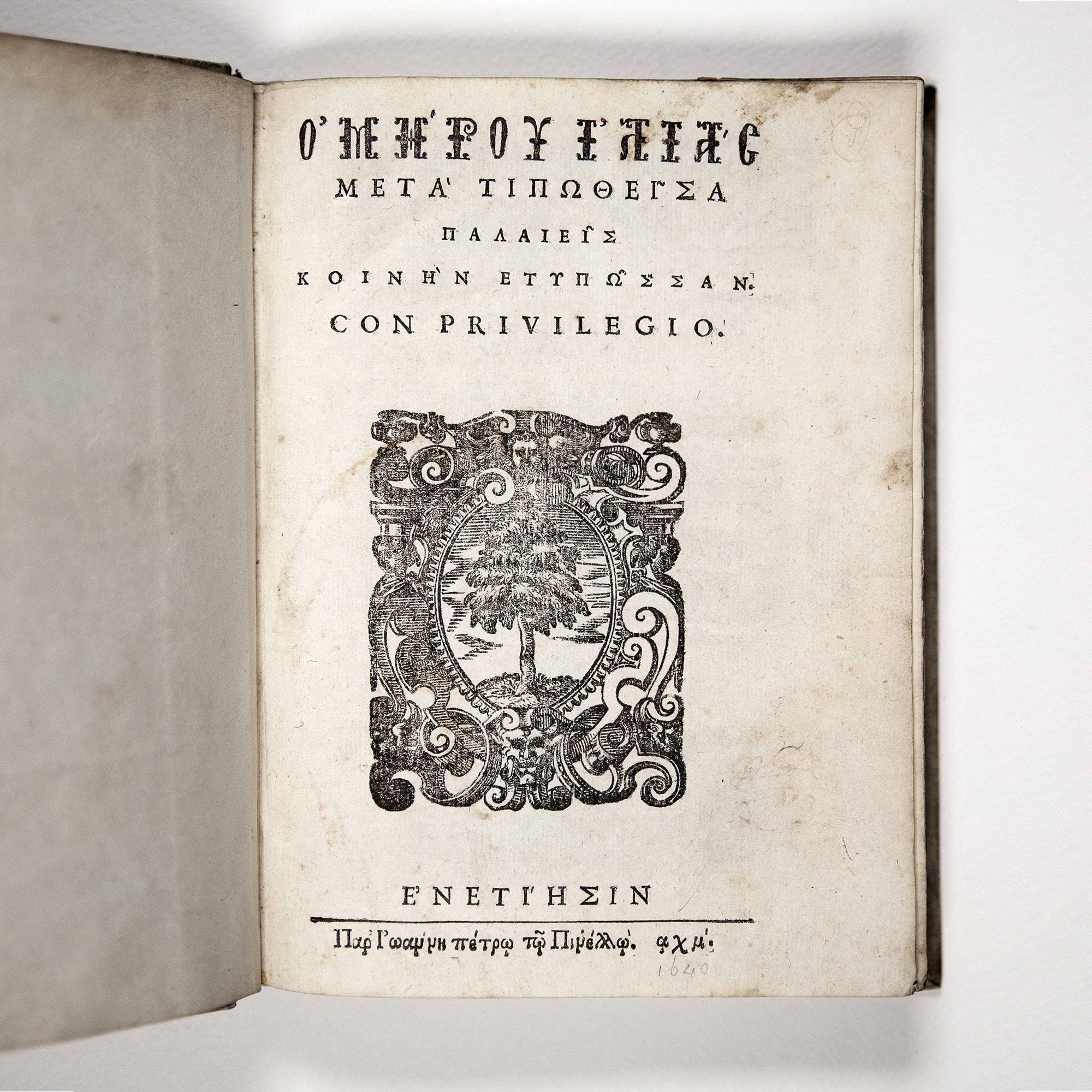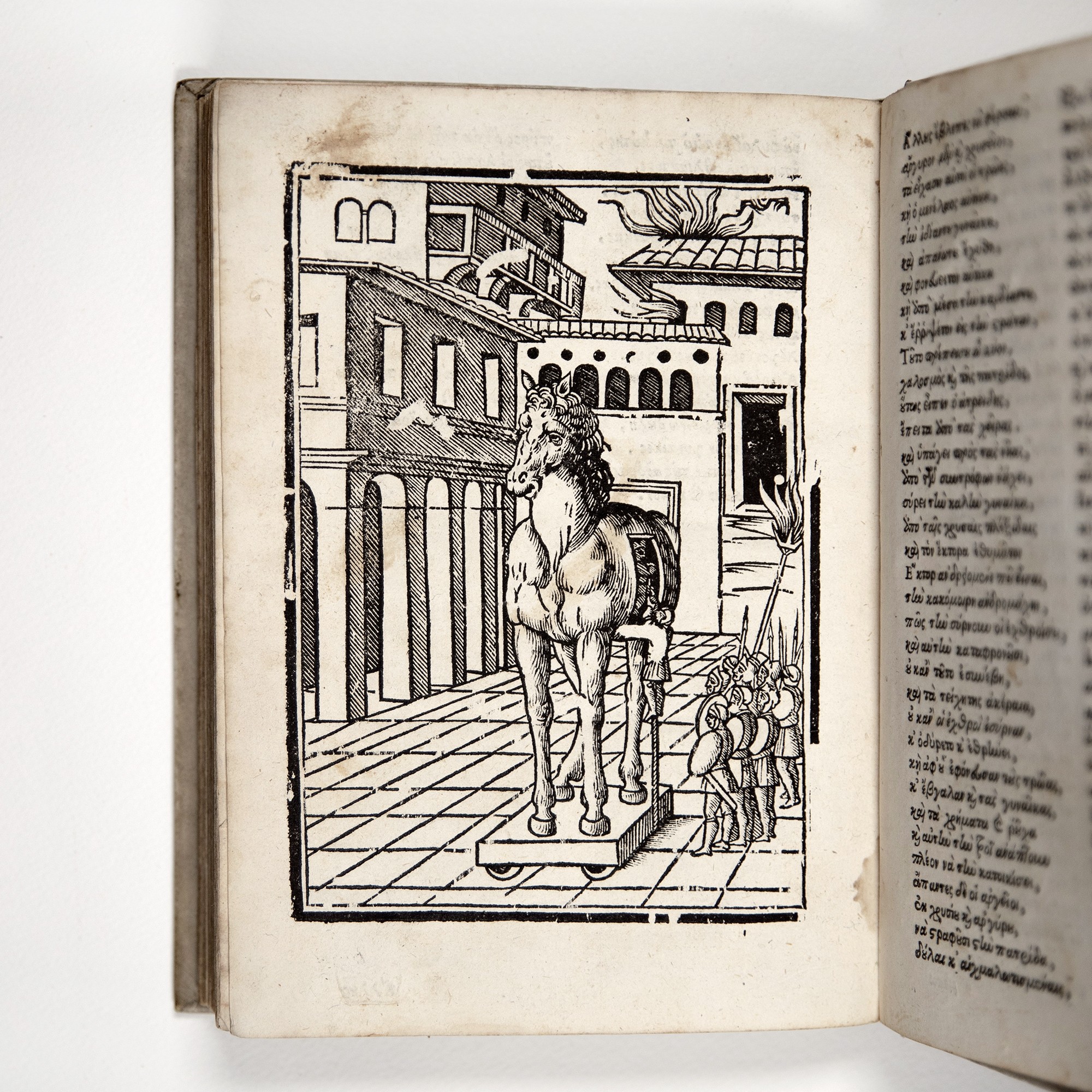Illustrating the Homeric Editions
The Homeric epics have been a timeless source of inspiration and artistic creation; printed editions were first illustrated in the 16th century. The charming woodcuts that adorn the first modern Greek Iliad (Nikolaos Loukanis, Venice, 1526) are a brilliant example. Later examples include sumptuous editions with engravings, such as those of translations by John Ogilby and Alexander Pope as well as the monumental edition with evocative drawings by John Flaxman.
A series of engravings illustrative of Pope’s translation of Homer’s Iliad and Odyssey engraved by the most eminent artists after designs by Stothard, Fuseli, Westall, Smirke. London: Printed by W. Lewis, Finch-Lane, Cornhill, [1825].
A series of engravings illustrating the translation of the Homeric epics by the English poet Alexander Pope (1688-1744), based on drawings by such eminent artists as Henry Fuseli (1741-1825), Thomas Stothard (1755-1834), and Richard Westall (1765-1836).
Marmor Homericum designed and executed by Baron H. Triqueti with text, consisting chiefly of passages from Homer translated by Philip Stanhope Worsley. London: Day & Son, 1866.
Edition with photographs of the ‘Marmor Homericum’, a marble intarsia commissioned by the English historian George Grote (1794-1871) for the University College London. in 1863. Designed and executed by the French sculptor Henri-Joseph-François Triqueti (c.1803-1874), the work depicts Homer reciting the Iliad to the accompaniment of a lyre. With text consisting chiefly of passages from Homer translated, by the English poet Philip Stanhope Worsley (1835-1866).
The Iliad [and] the Odyssey of Homer engraved
from the compositions of John Flaxman, R.A., sculptor.
London: Printed for Longman, Hurst, Rees, & Orme, 1805.
The Iliad and the Odyssey of Homer engraved after the compositions of the British sculptor and draughtsman John Flaxman (1755-1826) by the Italian etcher Tomasso Piroli (1752–1824) and the English poet and painter William Blake (1757–1827). A unique collection with seventy-three engravings to each of which are added reproductions in a smaller scale and many in colors neatly inlaid.
Soixante-quinze gravures au trait tirées de l’Iliade et de l’Odyssée gravées d’après les compositions de John Flaxman par Edouard Schuler. Carlsruhe, 1828.
The Iliad and the Odyssey of Homer engraved after the compositions
of the British sculptor and draughtsman John Flaxman (1755-1826)
by the German engraver Eduard Schuler (1805-1882).
Speculum heroicum principis omnium temporum poëtarum Homeri,
id est argumenta xxiiij librorum Iliados in quibus veri principis imago poëticè, elegantissime exprimitur. Les XXIIII livres d’Homere reduict en tables demonstratives figurées par Crespin de Passe. Chacque livre redigé en argument poëticque par le Sieur I. Hillaire, Sr de la Riviere. Traiecti Batavorum: Prostant in Officina CR. Passaei Calcographi,
et Arnhemiae apud Ioannem Ianssonium, 1613.
The twenty-four rhapsodies of the Iliad illustrated by the Flemish painter, draftsman and engraver Crispijn van de Passe the Elder (1565-1637). The engravings are accompanied by the text of the Iliad set into French verse by the 16th century French poet Isaac Hillaire, sieur de La Rivière. The venture accomplished in Utrecht by the Dutch cartographer and publisher Jan Janssonius (1588-1664).
